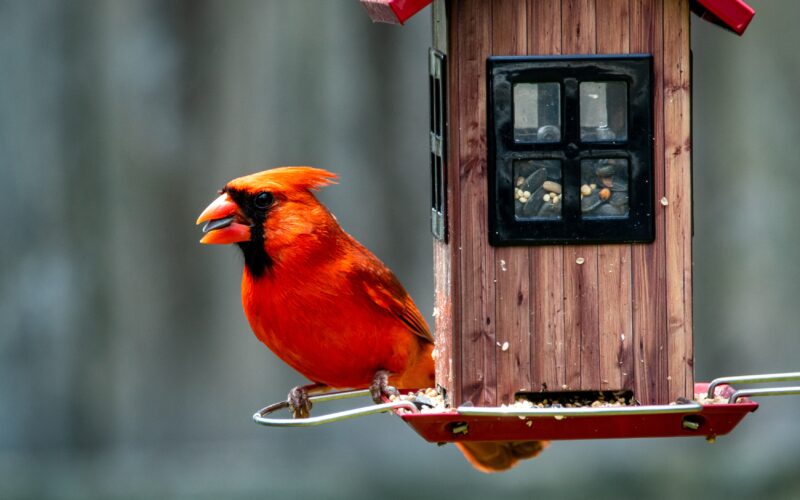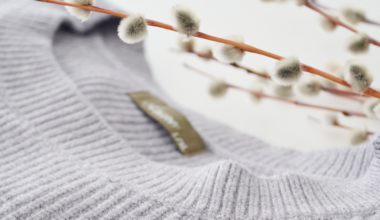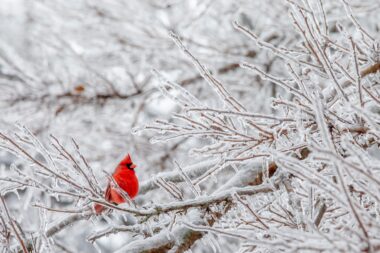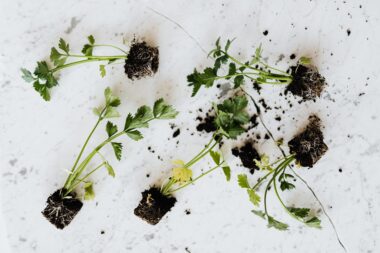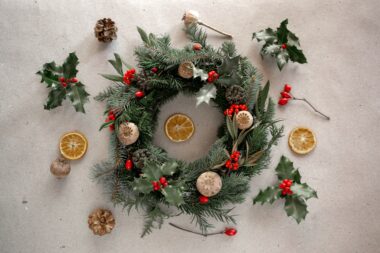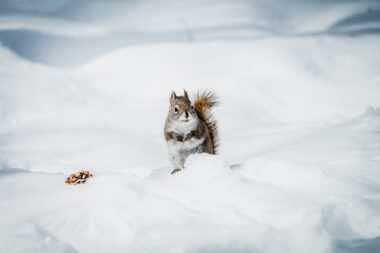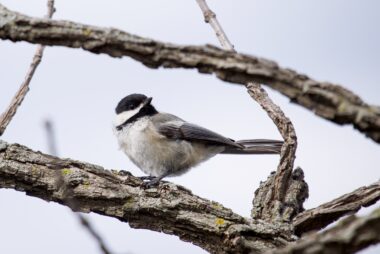Bird watching is a popular hobby in Canada with birders spending over a third of their time, an average of 133 days a year, watching birds. In the last Importance of Nature to Canadians study conducted by Statistics Canada, 38.3% of Canadians observed or cared for birds around their homes and 70% of the population participated in wild-life related activities like feeding, watching or photographing wildlife. And feeding birds doesn’t come cheap. Sales of bird seed hit 31 million dollars in 2021, even with the price of bird food doubling in the last few years. Unfortunately, store bought mixes often contain fillers like red millet and wheat. But knowing the best foods and seed mixes for your feathered friends can help keep costs lower by eliminating the filler. We’ve gathered five homemade bird seed recipes for some of Canada’s favourite backyard birds.
Common Canadian Birds
There’s over 690 different bird species in Canada, so it’s not possible to mention all of them and most won’t come to a bird feeder anyway. But a few of the most popular species like to frequent backyard feeders more often than others and might be attracted to some of our homemade bird seed recipes.
Downy Woodpecker
Where You’ll Find Them
The Downy Woodpecker is the smallest and most familiar Canadian woodpecker. They live in every province and can be found year round. You’ll find them in mixed and deciduous forests, parklands and orchards.
What They Eat
85% of their diet comes from insects. They also eat berries, sunflower seeds, peanuts and suet.
American Goldfinch
Where You’ll Find Them
Goldfinches can be found across most of southern Canada, ranging from British Columbia to Nova Scotia. They prefer open spaces like weedy fields and orchards.
What They Eat
American Goldfinches are primarily seed eaters. In the wild they like thistle, dandelion, ragweed, mullein, cosmos, goatsbeard and alder. For backyard feeders you can attract them with Nyjer and black sunflower seeds.
American Crow
Where You’ll Find Them
Of the three crow species in Canada, the American crow has the largest range, spanning the whole country. You’ll find them in deciduous and coniferous woods, along streams and in city parks.
What They Eat
With an omnivore diet, they eat seeds, insects and mice. To attract them to bird feeders, they’ll eat peanuts, whole kernel corn and suet.
Northern Cardinal
Where You’ll Find Them
In Canada, Northern Cardinal stick to the eastern part of the country in Ontario, Quebec, New Brunswick and Nova Scotia. They like dense bushes, woodland edges and suburban gardens.
What They Eat
In the wild, Cardinals forage in bushes and mostly eat seeds, insects and berries. For backyard feeders, they like sunflower seeds, safflower seeds, corn, and peanuts.
Blue Jay
Where You’ll Find Them
The Blue Jay’s range in Canada spans from Alberta to Newfoundland and Labrador. They prefer deciduous or mixed woods, especially beech, hazel or oak.
What They Eat
Blue Jays are omnivorous and will forage for their food. 75% of their diet is vegetable based – acorns, beechnuts, seeds and berries. But they also eat insects, spiders and small rodents. In bird feeders, they like peanuts, sunflower seeds and corn.
Types Of Feeders
Different birds prefer different types of feeders. To maximise your chances of attracting your favourite birds, make sure to use the right feeder for them along with your homemade bird seed recipes.
Ground Feeders
Many birds like sparrows, doves and wrens like to feed on the ground. The easiest way to feed these birds is just by scattering seed on the ground. But while this method is simple, it can also lead to unwanted visitors and predators. Ground feeders with metal cages can help deter larger animals from getting to feeding birds.
Shrub Feeders
Birds that like berries and insects, like cardinals, tend to forage in shrubs and bushes for their food. Shrubs provide a host of services for birds, from food and water sources to a place to hide from predators. These types of birds will happily visit hopper or tube feeders.
Tree Feeders
Some birds like woodpeckers, titmice and chickadees like to feed in trees. Using a tree mounted feeder with your bird seed recipes can help attract them to your garden and provide a safe space for them to eat from predators.
Hummingbird Feeders
You can feed hummingbirds a sugar solution, similar to nectar they find in the wild, 1:4 solution of refined white sugar to tap water. Bottle, tray and saucer type feeders can be used but need to be placed in a shaded area to avoid spoiling the sugar solution in the sun.
DIY Homemade Bird Seed Recipes
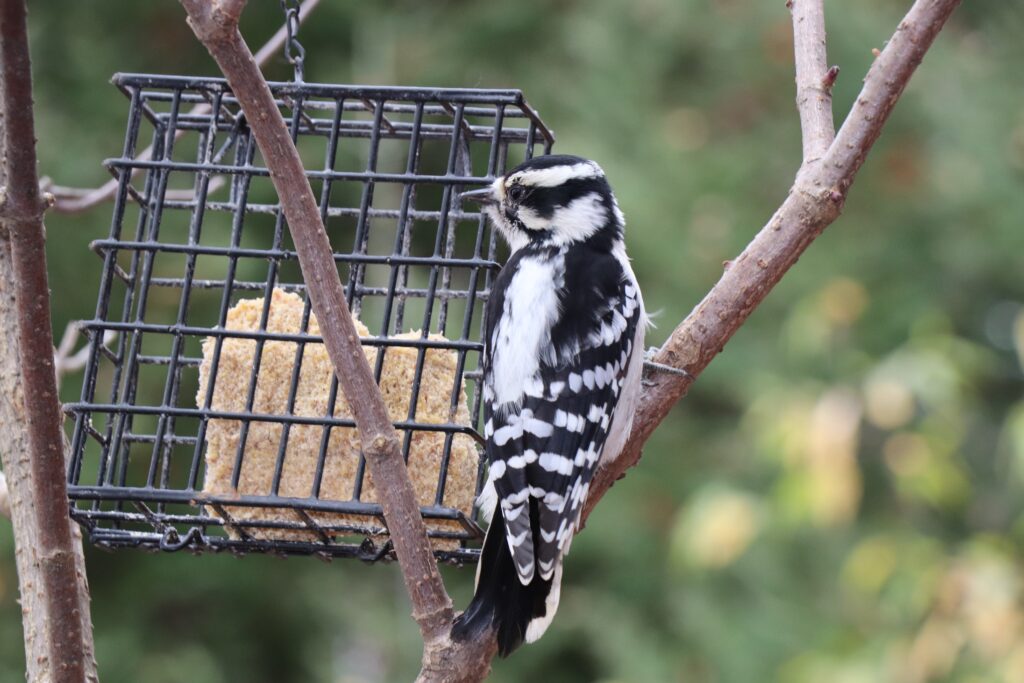
Bird Seed Recipe #1 WoodPecker Reward
Adapted from the Audubon’s and Baltimore Bird Club’s Suet Recipes.
Best For Woodpeckers, Nuthatches & Tree Feeders
Ingredients
- 1 1/2 cups (palm-free) shortening
- 3/4 cups nut butter (any kind)
- 3 1/2 cups sunflower seed
- 1 cup quick oats
- 1/2 cup corn meal
- Ice cube tray
Instructions
- Combine and mix sunflower seeds, oats and corn meal.
- Mix and melt shortening and nut butter together separately.
- Once melted, add the wet ingredients to the dry ingredients and combine.
- Put mixture in ice cube tray and freeze for a few hours.
- Add the seed cubes to your suet feeder and let your backyard birds enjoy!
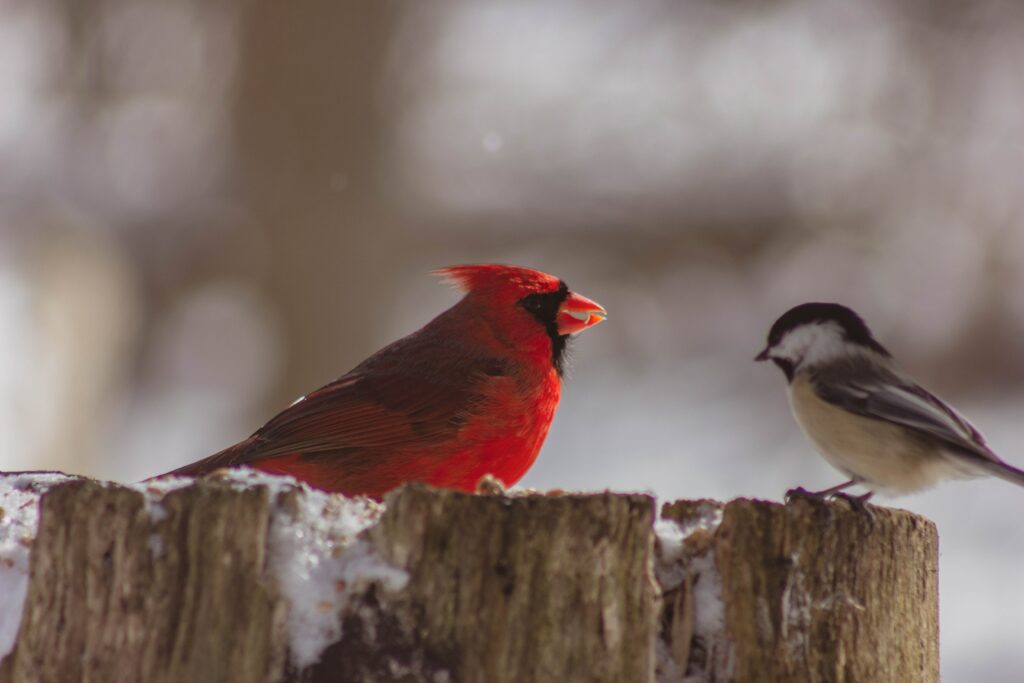
Bird Seed Recipe #2 The Pinecone
Adapted from the Almanac’s DIY Pine Cone Feeder Recipe.
Best For Chickadees, Cardinals & Tree Feeders
Ingredients
- Pinecone
- String
- Peanut Butter
- Black Oil Sunflower Seeds and/or Hulled Sunflower Seeds
Instructions
- Tie string around the top of your pinecones, leaving enough to loop around a tree.
- Cover the outside of your pines cones with peanut butter.
- Roll the pinecone in your seed mixture, making sure to press them into the peanut butter.
- Hang your seeded pine cone on a tree branch and enjoy watching bird’s feast on your homemade treat.
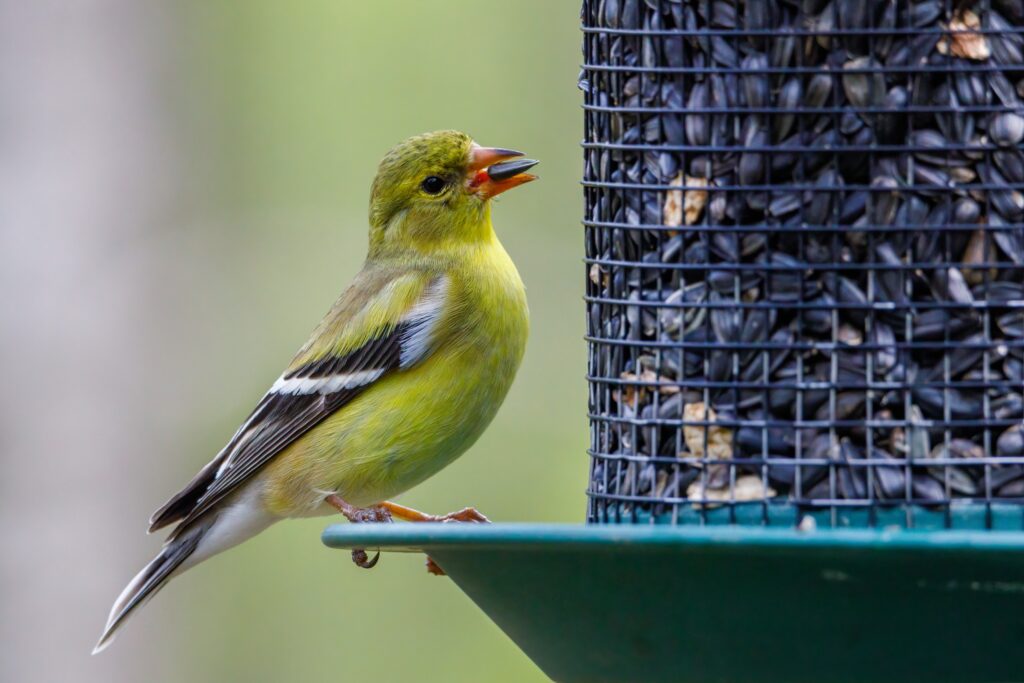
Bird Seed Recipe #3 Goldfinch Gold
Best For Goldfinches
Ingredients
- Fresh Nyjer Seeds
- Black Oil Sunflower Seeds
- Finch Feeder, Tube Feeder, Mesh or Seed Sock
Instructions
- Mix your Nyjer and black oil sunflower seeds together. Birds can be pretty picky about Njyer seed and won’t eat it when it dries out. Make sure its still dark and oily before you add it to your mix.
- Add your mix to your feeder. Make sure to choose a feeder that can hold small Nyjer seeds, like a tube or feeding sock.
- Put your feeder within 10-20 ft of trees and bushes to give birds shelter and predator protection if needed.
- Enjoy watching birds devour your backyard bounty!
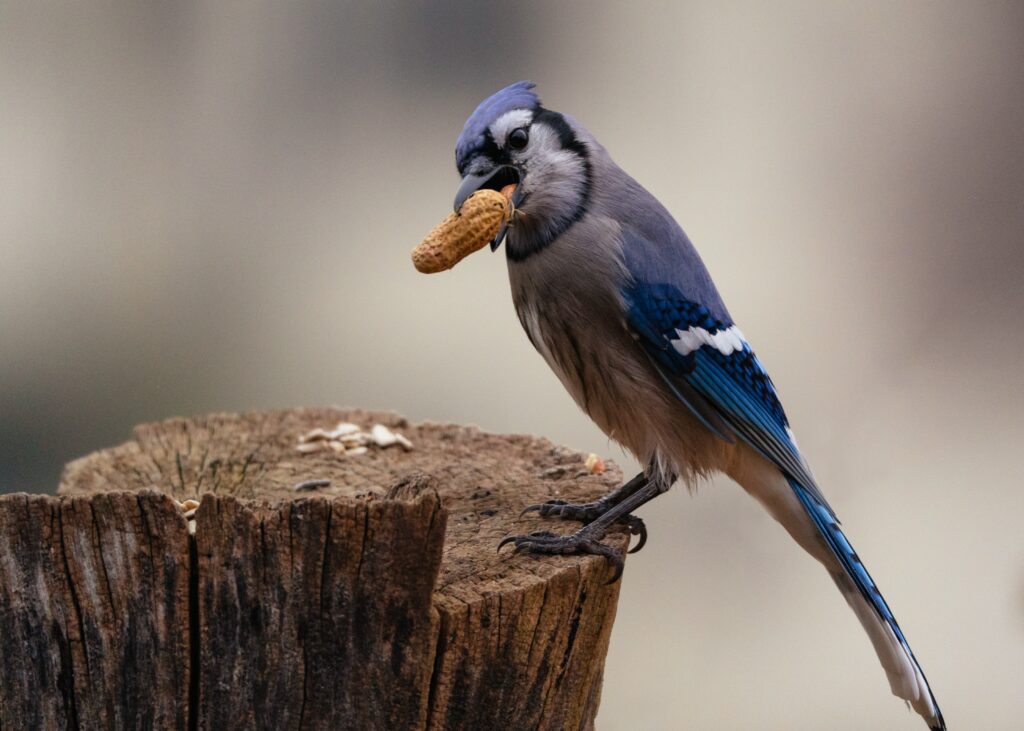
Bird Seed Recipe #4 Blue Jay Bounty
Best For Blue Jays, Canada Jays and Woodpeckers
Ingredients
- Black Oil Sunflower Seeds
- Whole Peanuts in Shells
- Sunflower Seeds
- Platform Feeder
Instructions
- Mix your sunflower seeds and peanuts.
- Place on your platform feeder. Blue Jays like to carry their food off to hid under a tree or shrub to eat in safety. A platform feeder allows them to get their food quickly and safely.
- Enjoy watching Blue Jays take off with their favourite foods
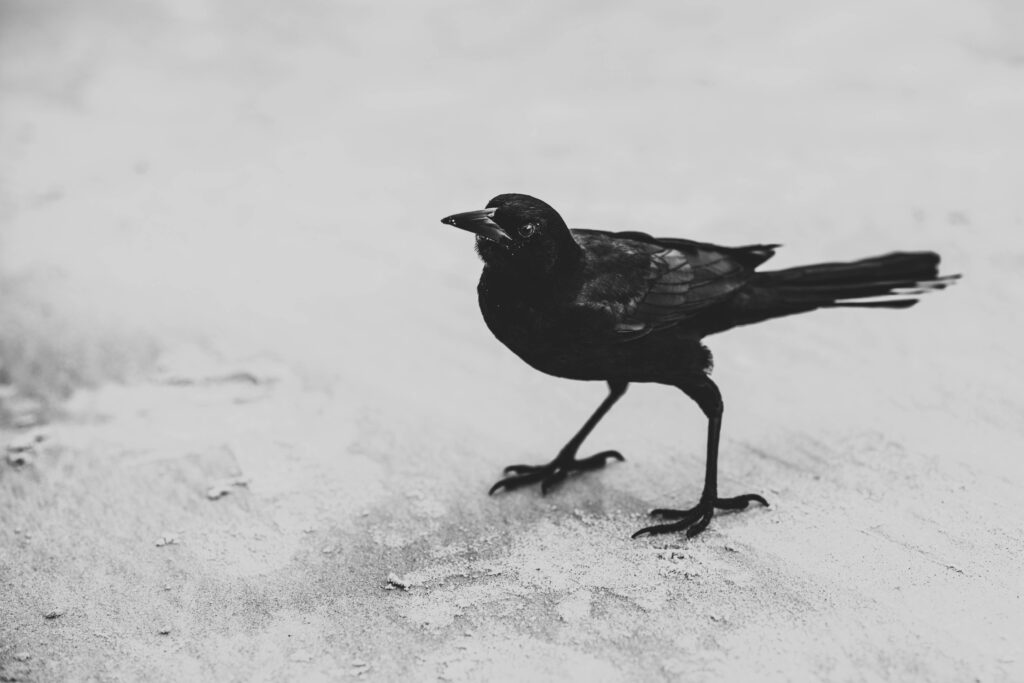
Bird Seed Recipe #5 Crow Crown
Best For Crows and Blue Jays
Ingredients
- Whole Peanuts
- Peanut Wreath
Instructions
- Get a bag of whole peanuts, still in their shell. While it make take a few days for these intelligent birds to deem your backyard safe for feeding, peanuts will help encourage them in.
- Place your peanuts in a metal peanut wreath and secure it to a tree or post.
- You might get blue jays joining the wreath party first, but eventually crows will visit and enjoy your peanut treat.
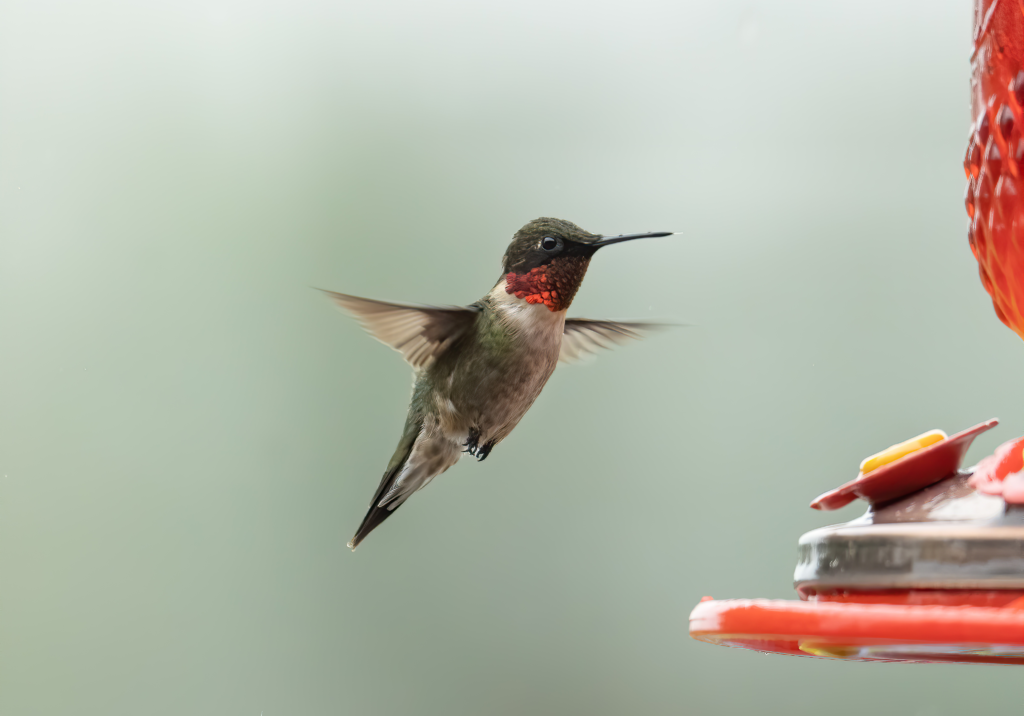
Bonus Bird Seed Recipe Hummingbird Nectar
Ingredients
- 1/4 Cup Refined White Sugar
- 1 Cup Boiling Water
- Heat-Safe Bowl
- Hummingbird Feeder
Instructions
- Mix 1 cup of boiling water with ¼ cup of refined white sugar in a heat safe bowl until the sugar dissolves. Don’t use raw, organic, natural sugar or honey as a substitute. They can be harmful to hummingbirds.
- Add the nectar to your feeders once its room temperature.
- Enjoy catching glimpses of these fast birds as they visit your nectar feeder.
Foods To Avoid Feeding To Birds
Bread
Bread isn’t nutritious for birds and can lead to angel wing, a condition that causes their wing to grow awkwardly, making it difficult to fly.
Suet In Warm Weather
Suet is a great high energy food for birds, but only in the cold winter months. At temperatures above 20 degrees Celsius (70 degrees Fahrenheit), suet can spoil and go rancid quickly.
Seed Fillers
Seed fillers like red millet aren’t interesting to most birds and end up going to waste. Avoid wasting money and bird food and select high quality seeds you know your backyard birds will love.
Sustayn is designed to present the most useful recommendations for environmentally friendly approaches and items. We update links when possible, but note that links can be broken and subject to change.
